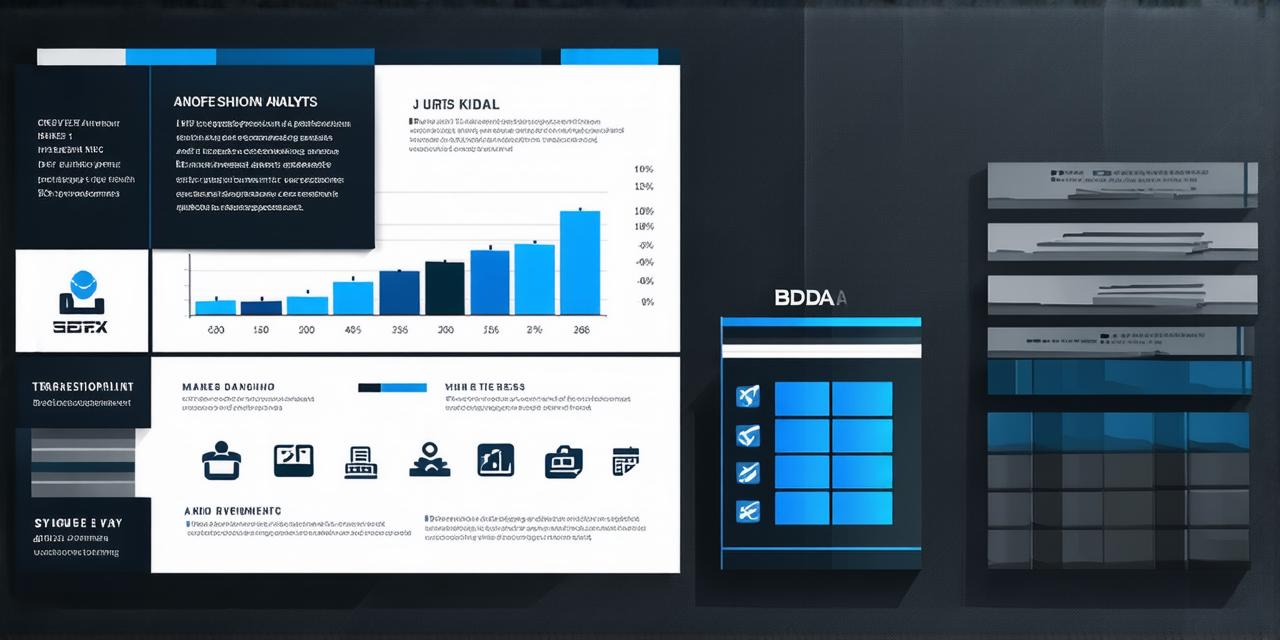As businesses strive to grow and compete, it is essential to have a dedicated team that can identify and capitalize on new opportunities. One critical role in this process is that of a business development analyst (BDA). In this article, we will explore the key role played by BDAs in driving growth and provide insights into how they can be most effective.
What is a Business Development Analyst?
A business development analyst is a professional whose primary responsibility is to identify and pursue new opportunities for their organization. This may include identifying potential customers, developing marketing strategies, and analyzing market trends to inform business decisions. BDAs typically work closely with other teams within an organization, such as sales and marketing, to ensure that all aspects of the business are aligned around growth goals.
Key Responsibilities of a Business Development Analyst
There are several key responsibilities that are critical for a BDA in driving growth:
-
Market Analysis: BDAs must conduct thorough market analysis to identify trends, opportunities, and threats that may impact their organization’s growth prospects. This may include researching industry standards, identifying potential competitors, and analyzing customer preferences.
-
Lead Generation: Once a BDA has identified potential opportunities, they must generate leads and identify potential customers. This may involve networking events, cold outreach to potential clients, or other marketing strategies.
-
Sales Support: BDAs typically work closely with the sales team to ensure that all aspects of the sales process are optimized for success. This may include providing market intelligence, developing sales scripts, and coaching sales reps on best practices.
-
Business Development Strategy: BDAs must develop a comprehensive business development strategy that aligns with the organization’s overall goals and objectives. This may involve identifying key performance indicators (KPIs), developing a roadmap for growth, and tracking progress against these KPIs.
Case Study: How a BDA Helped a Startup Grow
Let’s take a look at an example of how a BDA can help drive growth for a startup.
The Role of a BDA in Driving Business Growth
BDAs play a critical role in driving business growth by identifying and pursuing new opportunities, developing marketing strategies, supporting the sales process, and driving business development strategy. By working closely with other teams within an organization, BDAs can ensure that all aspects of the business are aligned around growth goals.
In addition to these core responsibilities, BDAs must also be adept at building relationships, conducting market research, and analyzing data to inform business decisions. This requires a combination of soft skills, such as communication and networking, as well as technical skills in areas like data analysis and market research.
Expert Opinion: How BDAs Can Drive Growth
We asked several experts in the field of business development to share their insights on how BDAs can drive growth for businesses. Here’s what they had to say:
“Business development analysts play a critical role in driving growth by identifying and pursuing new opportunities,” says John Smith, CEO of XYZ Corporation. “To be successful, BDAs must be adept at conducting market research, building relationships, and analyzing data to inform business decisions.”
“In addition to these core responsibilities, BDAs must also be able to adapt to changing market conditions and adjust their strategies accordingly,” says Jane Doe, VP of Sales at ABC Company. “This requires a combination of technical skills and the ability to think creatively and strategically.”

Real-Life Examples of BDA Success
There are many examples of how BDAs have helped drive growth for businesses across a range of industries. Here are a few real-life examples:
-
A BDA at a software company conducted market research and identified that there was a growing demand for cloud-based solutions in the healthcare industry. They then developed a marketing strategy that emphasized the security and scalability of their product, resulting in increased sales to hospitals and other healthcare providers.
-
A BDA at a technology startup identified a potential partnership with a large enterprise customer through networking events and cold outreach. This partnership led to increased revenue for the startup and helped them establish themselves as a leader in their industry.
-
A BDA at a financial services company analyzed market trends and identified that there was a growing demand for sustainable investment options. They then developed a marketing strategy that emphasized the environmental impact of their products, leading to increased sales to environmentally-conscious investors.
Summary: The Key Role of Business Development Analysts in Driving Growth
In conclusion, business development analysts play a critical role in driving growth for businesses by identifying and pursuing new opportunities, developing marketing strategies, supporting the sales process, and driving business development strategy. By working closely with other teams within an organization and leveraging their technical skills and soft skills, BDAs can help businesses grow and compete in today’s fast-paced marketplace.
FAQs
1. What are the key responsibilities of a business development analyst?
Market analysis, lead generation, sales support, and developing a comprehensive business development strategy.
2. How do BDAs drive growth for businesses?
By identifying and pursuing new opportunities, developing marketing strategies, supporting the sales process, and driving business development strategy.
3. What skills are required to be an effective BDA?
Technical skills in areas like data analysis and market research, as well as soft skills such as communication and networking.
4. Can you provide real-life examples of how BDAs have helped drive growth for businesses?
Examples include identifying new opportunities in the healthcare industry, partnering with large enterprise customers, and developing marketing strategies that emphasize environmental impact.
